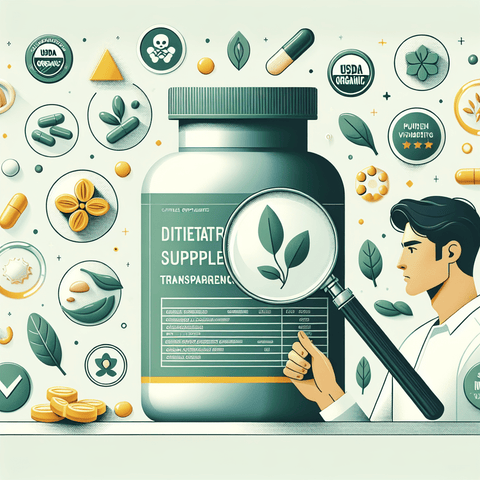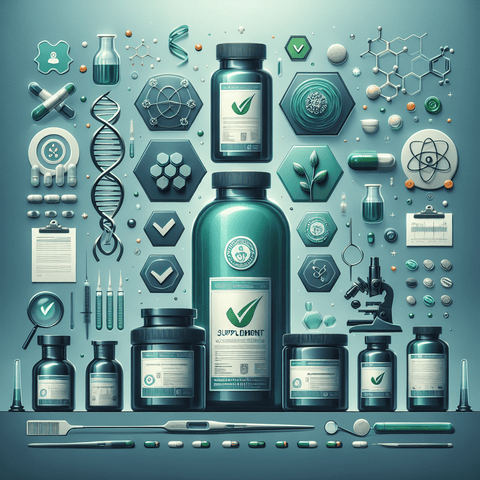Introduction
Over the past decade, the dietary supplement industry has exploded with growth, boasting thousands of products that promise everything from boosted immunity to sharper mental focus. It's now a multibillion-euro sector, with millions of consumers in Europe and worldwide incorporating various supplements into their daily routine. With this rapid growth, however, there’s also increasing scrutiny around supplement quality, transparency, and safety. Amidst glossy labels and persuasive marketing claims, many supplements hide behind vague terminology, undisclosed fillers, and misleading ingredient profiles.
While the right supplement can help support your daily nutritional intake, not every bottle on the shelf delivers what it promises. Choosing the wrong product may not only waste money but could negatively impact your health, especially if it contains hidden allergens, unnecessary artificial additives, or low-quality ingredients. Learning how to properly read and understand supplement labels is the first and most crucial step in making informed, health-conscious choices.
This comprehensive guide will dive deep into what to look for on supplement labels to avoid hidden ingredients and fillers. We’ll unravel label components, decode marketing jargon, scrutinize ingredient lists, and explore how regulatory loopholes may compromise transparency. We’ll also provide actionable tips to help you assess quality, spot red flags, and confidently choose clean, high-purity supplements from ethical brands. If you're tired of guessing and want to take charge of your health, this article will give you the tools and information to do exactly that.
Understanding the Supplement Label: Your First Line of Defense
Supplement labels are far more than just stickers on a package; they are your first defense against low-quality, misleading, or even potentially harmful products. They provide critical information about what a supplement contains, how much to take, who the product is intended for, and, ideally, assurances of quality through certifications. But all too often, these labels can be confusing, filled with scientific terms, percentages, and appealing—but vague—marketing claims. Understanding how to navigate these components is essential.
Basic Label Elements
Every reputable supplement should contain a Supplement Facts panel. This panel includes:
- Serving Size: Indicates the recommended quantity to consume.
- Amount Per Serving: The actual amount of each nutrient or ingredient.
- % Daily Value (%DV): Shows how much a nutrient contributes to your daily diet based on a 2,000-calorie value.
- Ingredient List: All components used in the formulation, including active ingredients and additives.
- Other Ingredients: This is where you'll find binders, preservatives, colors, and other non-active compounds.
Marketing Claims and What They Really Mean
Terms like “natural,” “clinically tested,” or “doctor-recommended” sound reassuring but are mostly unregulated and loosely interpreted. “Clinically proven” could mean the ingredient was studied in a lab—not necessarily the finished product. “Natural” could refer to a source that’s minimally processed, but there’s no legal standard, and synthetic processes might still be involved. Recognize that these claims are often used for persuasive appeal rather than verified scientific accuracy.
Red Flags to Watch Out For
- Excessively long ingredient lists with hard-to-pronounce names.
- Proprietary blends that group key ingredients without revealing exact dosages.
- “Magic bullet” language like “cures all,” “no side effects,” or “guaranteed results.”
- No third-party certifications visible on the label.
The Role of Certifications
To ensure the supplement matches what’s listed, look for third-party certifications such as:
- NSF Certified for Sport – Ensures no banned substances for athletes.
- USP Verified – Guarantees purity and accurate labeling.
- GMP (Good Manufacturing Practice) – Indicates quality manufacturing standards.
Products featured at Topvitamine.com often adhere to strict quality control guidelines, making label transparency and third-party certifications a priority. By knowing what to look for, you’re placing your trust in science-backed, consumer-first brands.
Demystifying Dietary Supplement Labeling Standards and Regulations
Understanding how supplement regulations work illuminates why being a vigilant consumer is essential. Dietary supplements are not regulated as strictly as pharmaceutical drugs, especially in regions such as the EU and the U.S. This legislative gap allows for some freedom in how supplements are labeled, which can work to the consumer’s disadvantage.
Supplements vs. Medications
Unlike medications, which require rigorous clinical trials and approval processes, supplements are considered food products under most governmental frameworks, including the European Food Safety Authority (EFSA) and FDA. They can be sold without clinical testing, as long as there are no unfounded health claims. Labeling must be truthful but is not necessarily rigorously vetted before hitting the market.
Loopholes and Labeling Language
These more lenient standards give rise to loopholes such as:
- General wellness statements: “Supports heart health” is permitted even if not substantiated by robust clinical evidence.
- No requirement to disclose all active ingredient quantities—especially when hidden under “proprietary blends.”
- Limited accountability for contamination or adulteration—often only revealed after post-market product testing.
Proprietary Blends: The Legal Cloak of Ambiguity
A proprietary blend combines several ingredients into a single item on the label, listing only the total quantity of the blend—not individual amounts. This obscures whether you’re getting a clinically effective dose of any one component. Ethically, some brands do list full amounts, but under current regulations, they are not legally required to do so.
International Labeling Variations
If you’re buying supplements internationally, be aware that different countries interpret label requirements differently. The term “natural” may mean something distinct in Canada versus the European Union. In essence, if you shop at global sites, make sure to verify labeling regulations specific to that country for better clarity.
At Topvitamine, categories such as vitamin D or vitamin K come with comprehensive product descriptions and compliance with EU labeling standards, so you can shop confidently.
Choosing Clean Supplement Ingredients: Identifying Quality over Quantity
“Clean” has become a buzzword in modern nutrition circles, but in supplements, it means something very specific: transparency, minimal processing, and the avoidance of unnecessary synthetic additives. Clean supplements prioritize bioavailability and nutrient integrity over flashy formulations or trendy compounds with weak scientific backing.
What Clean Ingredients Really Mean
Clean-label supplements avoid controversial additives like artificial sweeteners, synthetic coloring, hydrogenated oils, or titanium dioxide. Instead, they use straightforward, often plant-based ingredients and derive nutrients from real, whole-food sources or scientifically supported synthesized forms.
Ingredients You Want to See
- Vitamins & Minerals – Especially those in bioavailable forms (e.g., methylated B12 rather than cyanocobalamin).
- Whole Food Extracts – Like turmeric, acerola cherry (vitamin C), or spinach powder (iron boost).
- Amino Acids – Such as L-theanine, glutamine, or arginine, linked to documented functional roles.
Ingredients to Avoid
- Artificial Sweeteners – Such as aspartame, sucralose, or acesulfame potassium.
- Food Dyes – Especially Red 40, Yellow 5, and Blue 1, which serve no nutritional purpose.
- Titanium Dioxide – A whitening agent banned from food use in the EU since 2022.
- Hydrogenated Oils or Trans Fats – Rare in quality supplements but still occasionally present.
Sourcing and Best Practices
Quality supplements also come with clean production values such as:
- Organic Sourcing
- Non-GMO
- Vegan & cruelty-free
- Free from allergens like gluten, soy, dairy
Products available in Topvitamine’s magnesium or DHA/EPA omega-3 sections often feature these standards, so you're selecting from the best curated offerings.



